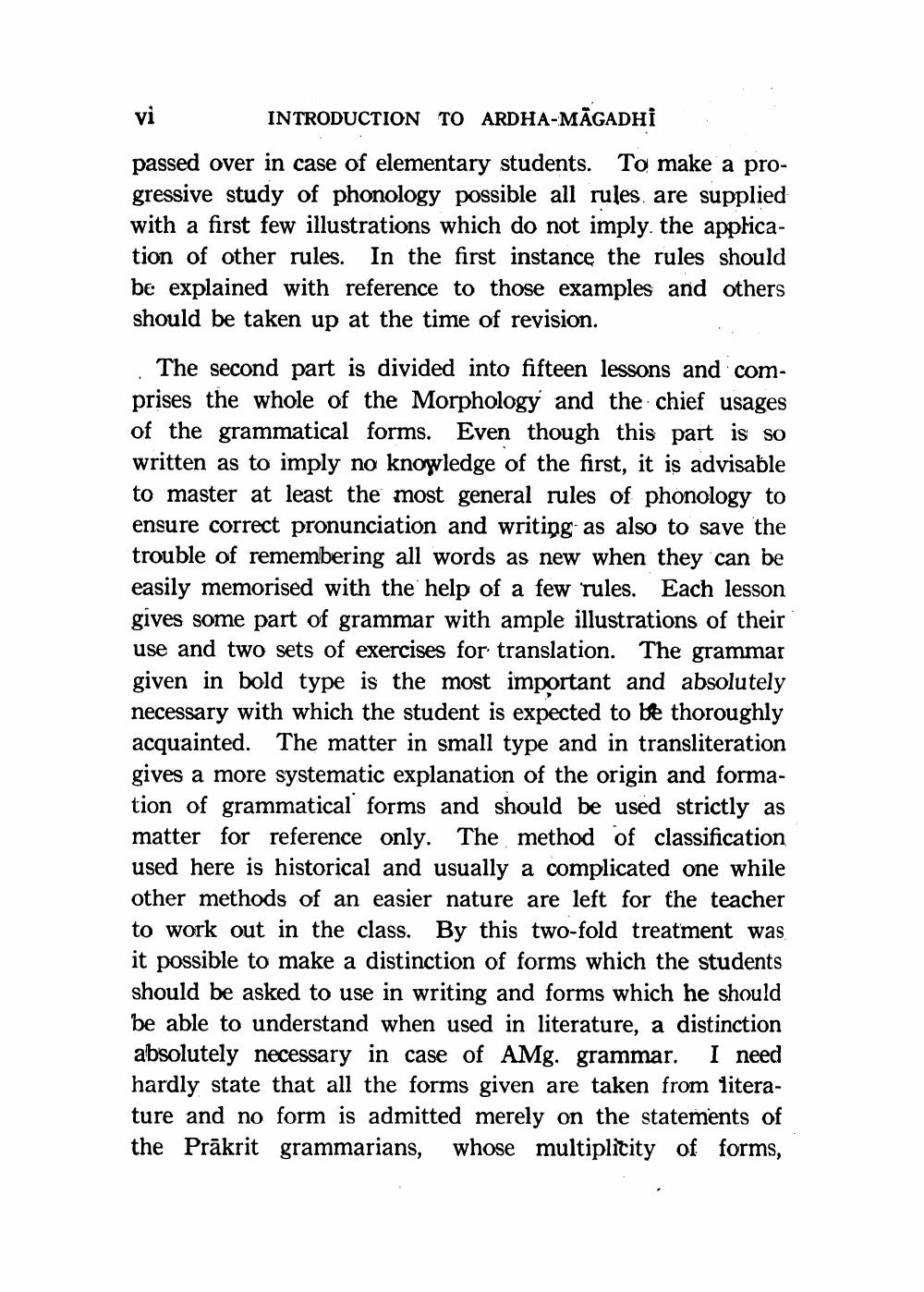________________
vi
INTRODUCTION TO ARDHA-MĀGADHI . passed over in case of elementary students. To make a progressive study of phonology possible all rules, are supplied with a first few illustrations which do not imply. the application of other rules. In the first instance the rules should be explained with reference to those examples and others should be taken up at the time of revision.
The second part is divided into fifteen lessons and comprises the whole of the Morphology and the chief usages of the grammatical forms. Even though this part is so written as to imply no knowledge of the first, it is advisable to master at least the most general rules of phonology to ensure correct pronunciation and writing as also to save the trouble of remembering all words as new when they can be easily memorised with the help of a few rules. Each lesson gives some part of grammar with ample illustrations of their use and two sets of exercises for translation. The grammar given in bold type is the most important and absolutely necessary with which the student is expected to be thoroughly acquainted. The matter in small type and in transliteration gives a more systematic explanation of the origin and formation of grammatical forms and should be used strictly as matter for reference only. The method of classification used here is historical and usually a complicated one while other methods of an easier nature are left for the teacher to work out in the class. By this two-fold treatment was it possible to make a distinction of forms which the students should be asked to use in writing and forms which he should be able to understand when used in literature, a distinction absolutely necessary in case of AMg. grammar. I need hardly state that all the forms given are taken from literature and no form is admitted merely on the statements of the Prākrit grammarians, whose multiplicity of forms,




